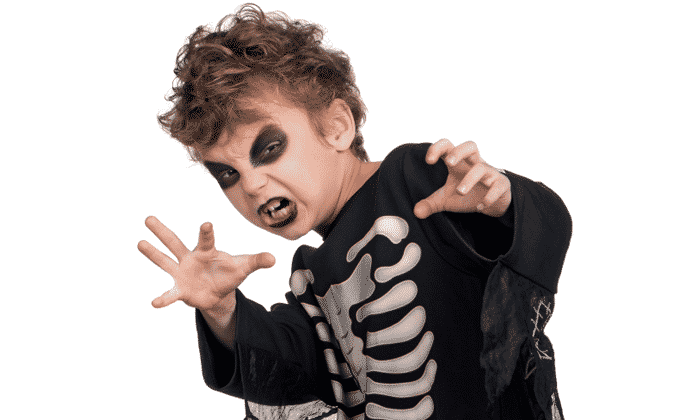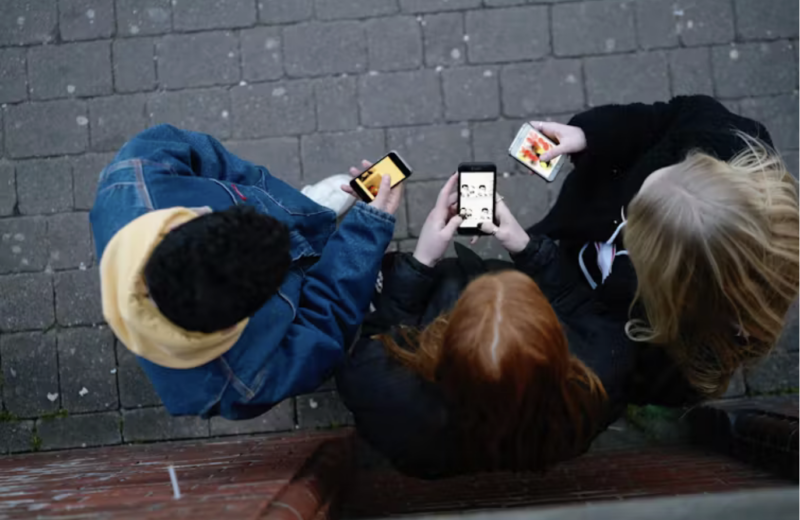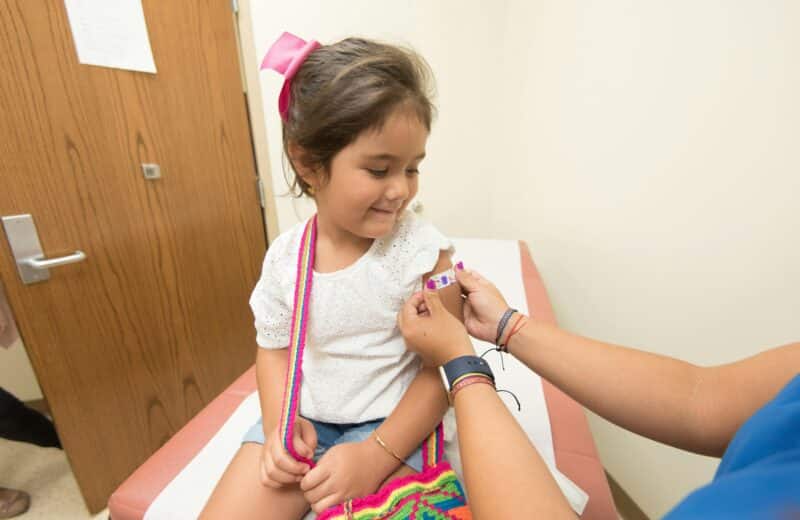The trick to mastering a kid’s fear makes for a real treat
One of my life’s crowning achievements came when I was 8 years old. It was Halloween, and I won my second-grade class’ Scariest Costume award. At the time, Teen Wolf was my favorite movie, so that’s what I chose as my Halloween costume, though I was more of a preteen wolf at that age.
Mom glued brown fur to my face, neck, arms and hands using the makeup kit procured from our town’s local party store. Some dark circles around my eyes, a pair of plastic glow-in-the-dark fangs in my mouth and a perfectly pitched howl, and yeah, I was a fright.
Fear has long been a staple of childhood rituals, like reciting ghost stories around campfires in the woods. And tempting the validity of urban legends, like the classic Bloody Mary, always make for great rushes of adrenaline and sleepless nights that can force a kid to discover his or her own amount of bravery. Scaring one another through pranks or jumping out from behind a couch in a dark room at a slumber party is universal.
But fear is an emotion closely tied to anxiety. And anxiety is bad, right? That’s why we have pills to curb it. Perhaps the kiddies ought to be trick or treating for Remerol tablets instead of candy bars this Halloween.
But according to Rebecca Nelson, PhD, a licensed clinical child psychologist with NorthShore University HealthSystem, choosing to expose or not expose our youth to fear is not an either/or sort of decision. “When we’re talking about science and emotion, we should never talk about it as being something all black or all white,” says Nelson.
“We want children to learn to manage their emotions so that their emotions don’t manage them. If we think about [fear] as a developmental path, then we can regulate it. Halloween is a perfect opportunity for families and communities to help children and teenagers to get in touch with their [fear-based] emotions.”
When it comes to getting kids to face their fears, Nelson says the setting is important. Scary stories are far worse at night than they are during daylight hours. It’s about making children comfortable. And comfort comes from making potentially scary things relatable. Such as…monsters.
“We have books like Where the Wild Things Are and movies like Monsters, Inc. for kids,” says Nelson. “For older kids, there was ‘Scooby Doo’ and ‘The Munsters.’ Make something [into an everyday entity] and it can go from fearful to [nonfearful].”
Lest we forget the furry inhabitants of kid-favorite “Sesame Street.”
Then there are the times when it’s better to not face the fears at all. “Sometimes we don’t want to face our fears so we don’t have to acknowledge certain things,” says Brad Stolbach, PhD, a psychologist in the pediatrics department at the University of Chicago. “It’s a matter of understanding where the fear comes from and if it’s causing problems, [such as] interfering with what you have to do.” If it’s not, Stolbach says it may be best not to face it.
“But, sometimes,” he continues, “mastering a fear can make people feel that they can do all sorts of things.
Overall, managing anxiety associated with fear is more about the temperament of the child. “What might seem like unrealistic fear to one kid may be real fear for another. It depends on the [individual’s] history,” says Stolbach.
“It’s interesting. Now that I have teenagers, instead of worrying about them walking down the street and trick or treating, I worry about them going to zombie apocalypse houses,” says Leah Hamilton, a mother of two in Chicago.
Her son Max, 14, won’t step foot in a haunted house. “But he has no problem watching [scary] movies. He just doesn’t want to watch real people dress up as zombies and jump out at him,” Hamilton says.
However, daughter Olivia, 12, can compartmentalize her fear and has no reservations at all about walking through a haunted house.
“Olivia is the kind of person who needs to know everything before she does it,” says Hamilton. “So she is completely prepared for what she’s getting into.”
“We all have different ways that we try to master the existential fears we have,” Stolbach says. “I think that’s why a lot of kids enjoy that experience of being scared in a context when they know they’re not actually in danger.”
“That’s paramount,” Nelson says. “We need to let them know what will happen. Providing enough choices and a few different options is extremely beneficial.”
ChicagoKids.com, a website providing Chicagoland families with kid-friendly activities and news, uses its Halloween Zone to promote, among other things, 10 area haunted houses, which are broken up into three categories: Not-So-Scary Haunted Houses; Medium Scary and Lights-On Matinees; and Super Scary. The categories come with a disclaimer that reads in part: “Age recommendations are a guideline … you’re the one who must make sure your child can handle it!”
“Part of being alive is having certain existential fears,” says Stolbach.
So what it comes down to this Halloween is that no one should be afraid of having a good time.
For additional information about managing a child’s fears, Rebecca Nelson, PhD, recommends the book Freeing Your Child From Anxiety: Powerful Practical Solutions to Overcome Your Child’s Fears, Worries and Phobias by Tamar Chansky,













